Geoff Williamson led a tour of the Montrose Point Bird Sanctuary and environs in Chicago's Lincoln Park, sponsored by the Chicago Ornithological Society and the Chicago Group of the Sierra Club. The day started with temperatures at the freezing mark, and with winds from the west-northwest, so that there were not a lot of spring migrants (or much of any insects!). But we did get to see some nice things.
Not only was it cold but there was a light covering of snow over much of the area, including the beach.
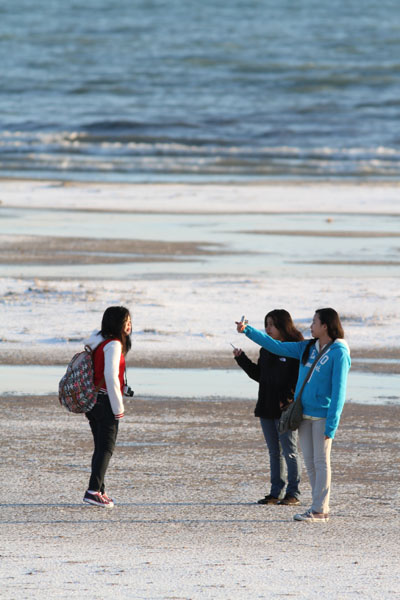
This American Robin was seen sleeping in a pine tree while trying to warm up by basking in the sun.
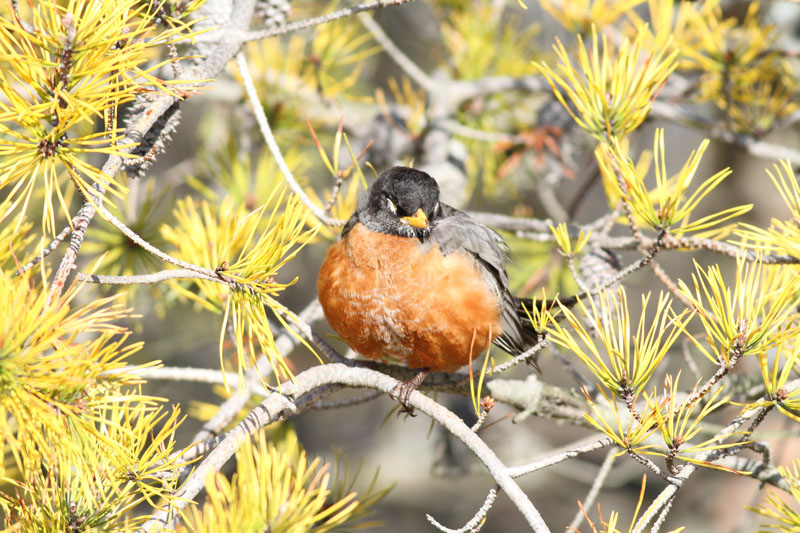
When we walked along the shoreline of Lake Michigan, we saw a couple of Common Loons. Here is one of them.
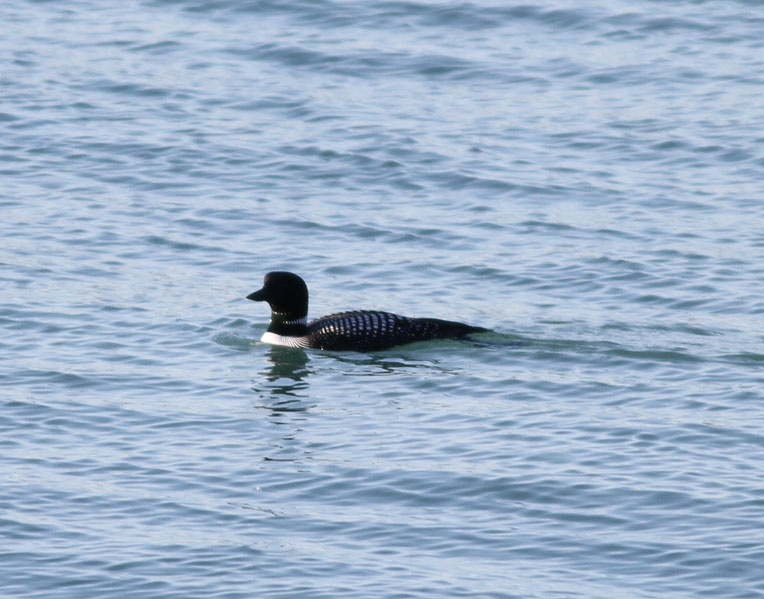
One of the more common birds at Montrose Point that morning was the Common Grackle, aptly named.
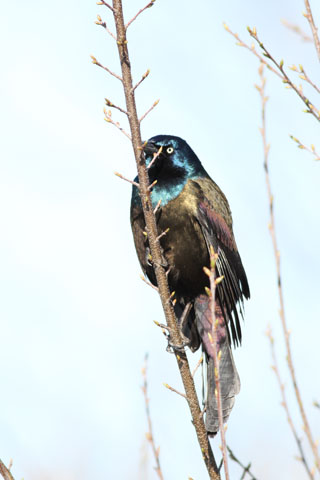
Keen eyes were able to spot a number of Hermit Thrushes. This species was generally seen on or near the ground..

The bright red Northern Cardinal provided a splash of color in the scenery.
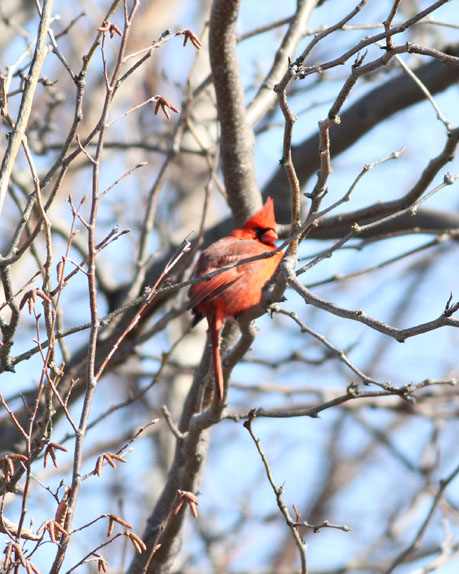
The sound of tapping led the group to where this Downy Woodpecker was drilling away on a tree. The red coloration on the back of the bird's head means it is a male.
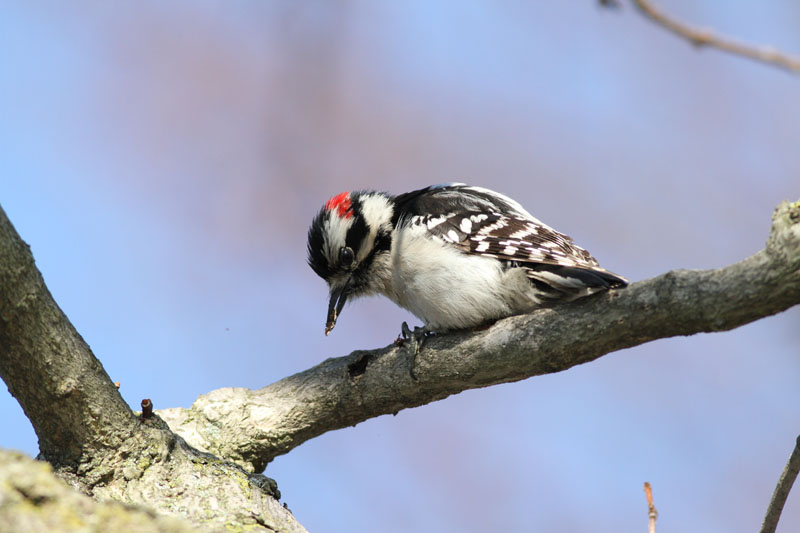
Another woodpecker species we saw was the Northern Flicker. The variety of flicker that we have in the Chicago area is the Yellow-shafted Flicker. To see why, look closely at the photograph. You can see the extensive yellow on the underside of the far right wing, but also look at the upperside of the near, left wing. You'll find that the actual shafts of the feathers are yellow in color.
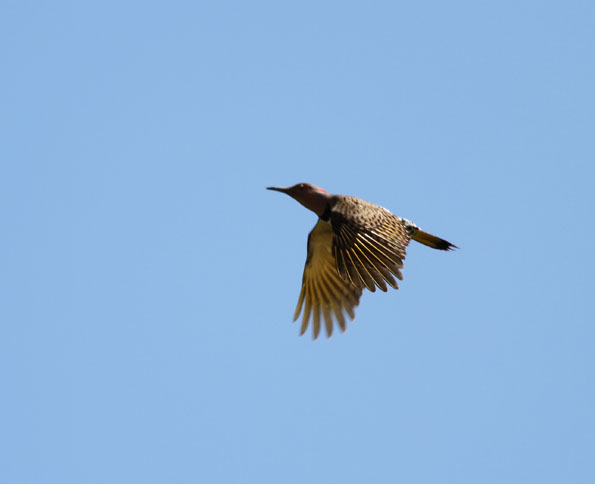
A third kind of woodpecker we saw was the Yellow-bellied Sapsucker, a "passage migrant" in our area. It migrates through in both spring and fall, but doesn't spend the winter or summer here.
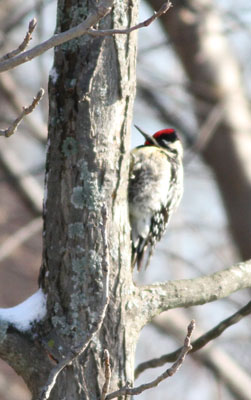
Many of the trees showed the characteristic horizontal line of holes created by a sapsucker. In this set of fresh sapsucker holes, we could see the moist sap running down from each hole.
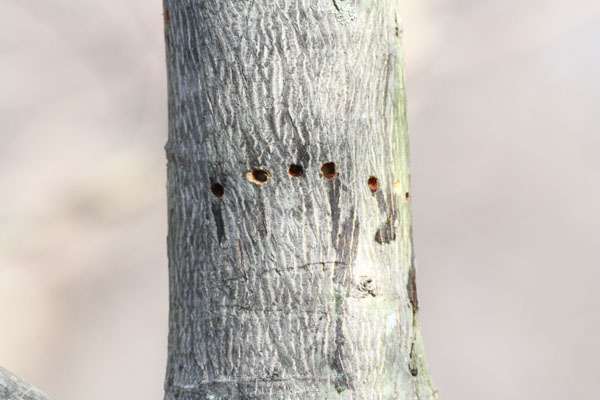
It's not just the sapsuckers that enjoy drinking the sap from these holes. Other birds like it too, such as this Yellow-rumped Warbler.
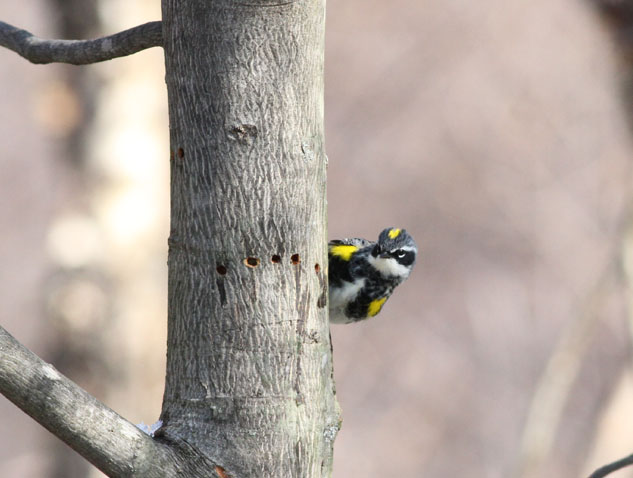
A Ruby-crowned Kinglet also came in to take advantage of the sapsuckers' handiwork.
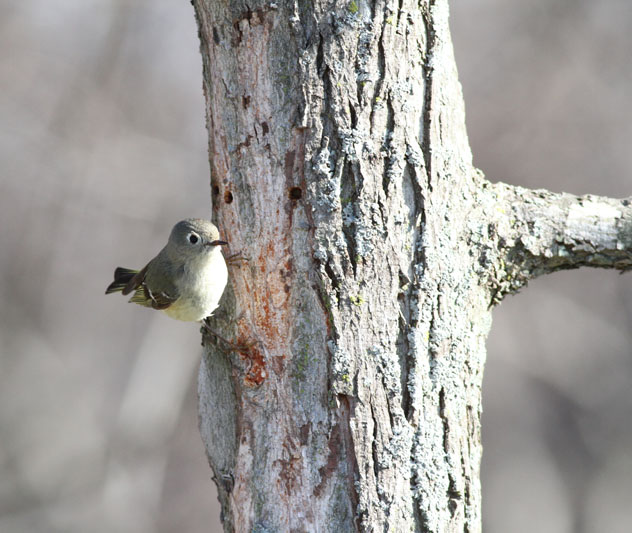
In about of month from this trip will be the height of warbler migration, when a large diversity of species from this colorful family can be enjoyed.
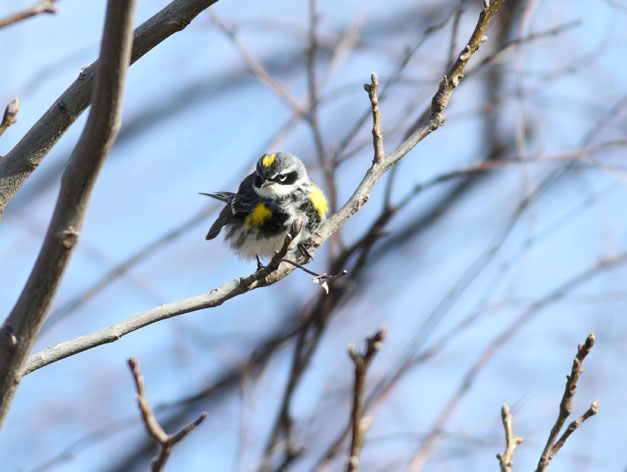
Among the sparrows at Montrose Point was this Song Sparrow....
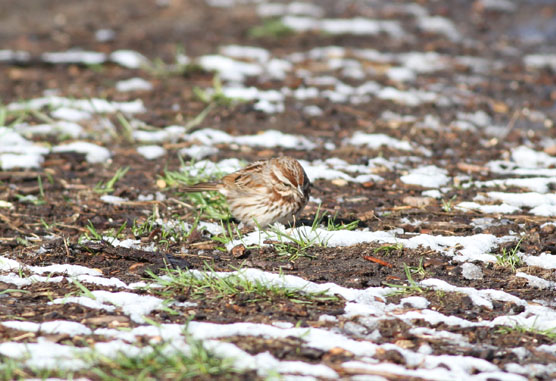
.
...... as well as this White-throated Sparrow.
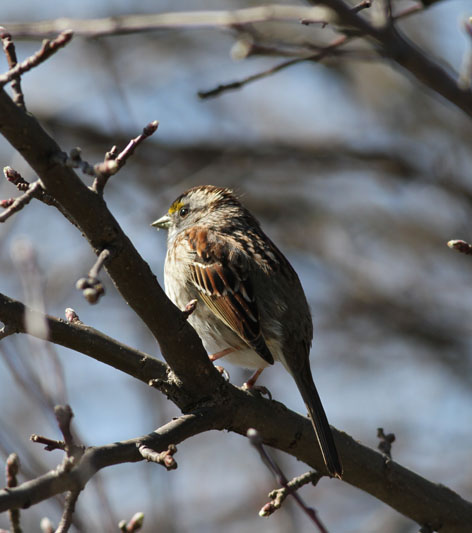
The highlight moment of the morning was getting to see this Long-eared Owl roosting in one of the groves. The field trip had officially ended, but we gathered together many of the participants who had stayed to help clean up Montrose Beach and went and looked at the owl.
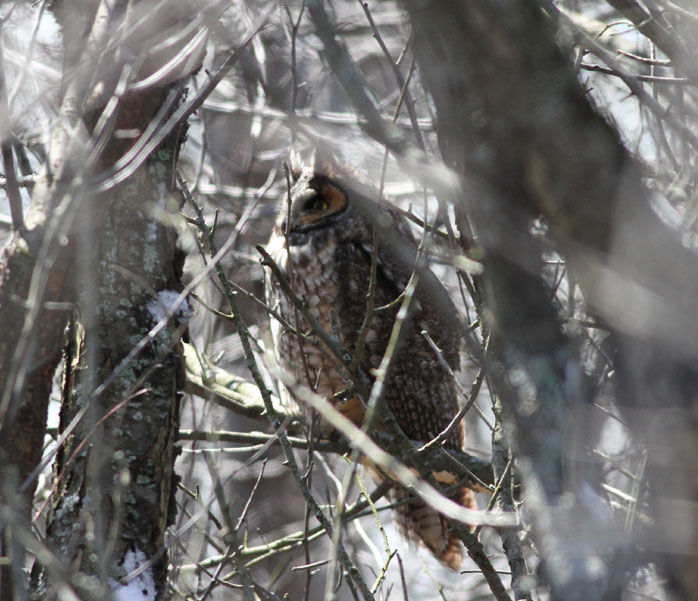
Though most of the trip participants had left by late morning, some got to enjoy views of this Short-eared Owl flying over the beach.
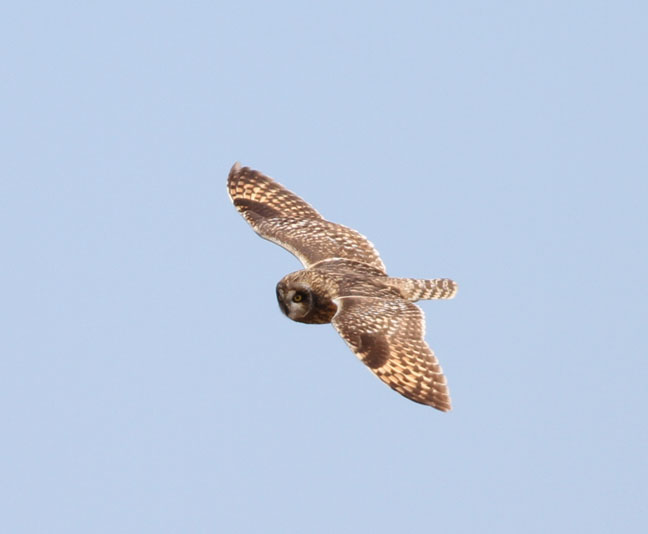
List of birds species seen, with number observed.
Canada Goose 6
Mallard 17
Common Goldeneye 1
Red-breasted Merganser 38
Common Loon 2
Double-crested Cormorant 349
Turkey Vulture 1
Red-tailed Hawk 1
Killdeer 1
Ring-billed Gull 62
Herring Gull 8
Caspian Tern 4
Rock Pigeon 3
Mourning Dove 3
Long-eared Owl 1
Short-eared Owl 1
Yellow-bellied Sapsucker 6
Downy Woodpecker 3
Northern Flicker 7
American Kestrel 2
American Crow 8
Barn Swallow 3
Black-capped Chickadee 2
Brown Creeper 1
Ruby-crowned Kinglet 4
Hermit Thrush 9
American Robin 26
Brown Thrasher 3
European Starling 7
Yellow-rumped Warbler 6
American Tree Sparrow 3
Field Sparrow 3
Song Sparrow 14
Swamp Sparrow 8
White-throated Sparrow 3
Dark-eyed Junco 5
Northern Cardinal 6
Red-winged Blackbird 27
Eastern Meadowlark 2
Common Grackle 69
Brown-headed Cowbird 4
House Finch 1
House Sparrow 13
List of mammal species seen, with number observed.
Eastern Gray Squirrel 2
Eastern Cottontail 5
This
page was last updated on 20 April 2013.
Contact Geoff Williamson
with any comments, updates or suggestions.